5.4.1 Walking and Cycling
Action TM A6 to "Develop a new pedestrian and cycle link from Celbridge to Leixlip, via Castletown House, through the former Hewlett Packard site, across the M4 to the Wonderful Barn and onto Leixlip Town Centre and Leixlip Louisa Station. " is welcomed.
-
Insert the word Bridge into the name of Leixlip Louisa Bridge Station.
-
The words "former Hewlett Packard site" might be rephrased to the "Kildare Innovation Campus".
Action TM A7 to
"Investigate the feasibility of providing a footpath connection from Maynooth to Celbridge."
should be changed to
"Develop a new pedestrian and cycle link from Maynooth to Celbridge"
Actions TM A11 and TM A12 regarding permeability connections should include a commitment to ensure that permeability connections are implemented. Permeability connections are key to promoting walking and cycling as they can have a dramatic reduction on walking and cycling distances and time.
Action TM A13 to "Prepare a Cycle Network Study for each of the key towns in County Kildare consisting of the primary links identified in the NTA’s Draft Greater Dublin Area Cycle Network Plan (2021), connections between the major towns and surrounding settlements, key strategic cycle routes, greenways and local links, all in accordance with the National Cycle Manual. The study will include draft widths, level of services and identify local targets." should be expanded to at least include all towns in the Dublin Metropolitan Area and Newbridge, that is, the key towns and all towns clustered with them. Ideally something of the caliber of South Dublin Co Co's CySd Cycle South Dublin Programme of Work should be prepared with all schemes gruoped into NOW, SOON or LATER.
This section should include new objectives/ actions to progress needs identified during the Celbridge Town Renewal Plan consultation and defined in the FINAL Proposed Projects Document:
Project 3 - Enhance & Develop Green Infrastructure
The public consultation feedback clearly highlights the value the local community sees in green infrastructure. Comments focused on existing green spaces that are not open to the public, such as Donaghcumper House and St.John of Gods, as well as potential green connections for cyclists and pedestrians.
Project 3 proposes the creation of a green route along the LIffey, through the grounds of Celbridge Abbey and the Mill, to Donaghumper and on to Castletown House.
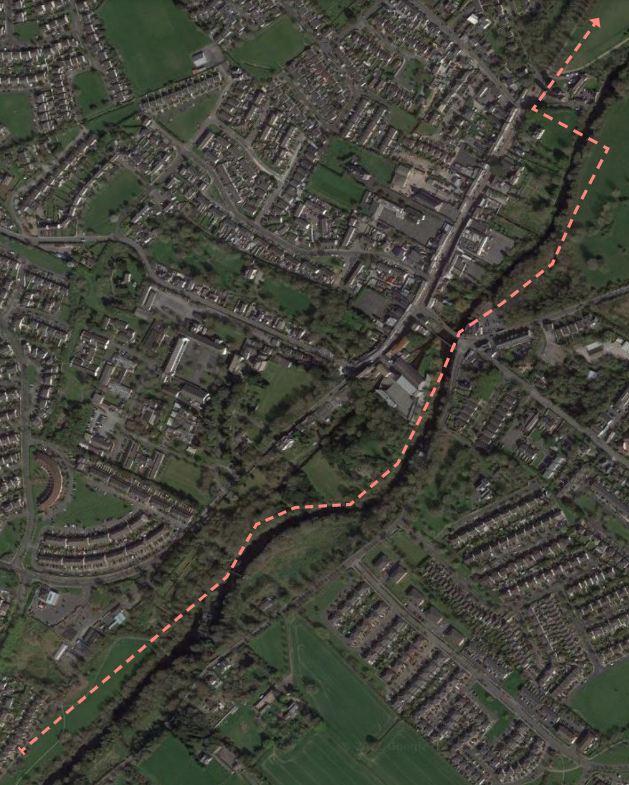
Project 4 - Upgrade Cycle Infrastructure
The majority of town centre streets do not have dedicated cycle lanes. Project 4 focuses on the upgrade of existing cycle infrastructure and the inclusion of new infrastructure. While we recognise the existing fabric of the town does not permit the inclusion of cycle tracks in some areas, they would be of great benefit wherever they can be included.
-
In areas where this is not possible,other interventions could be considered, such as:
-
Priority lights for cyclists;
-
Shared pedestrian / cycle paths;
-
Creating cycle routes through quieter, residential streets, reinforced by closing one end of the street to vehicular traffic.
Project 4 can also work alongside and interface with Project 1 Main Street Interventions and Project 3 Enhance and Develop Green Infrastructure.
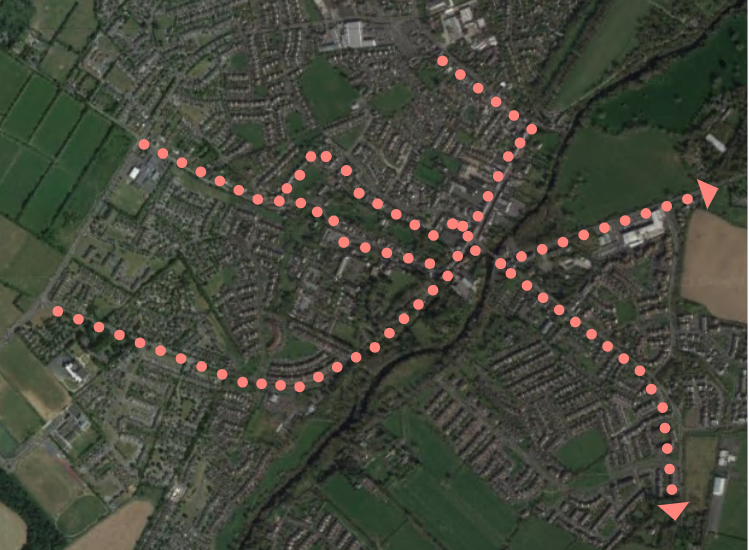
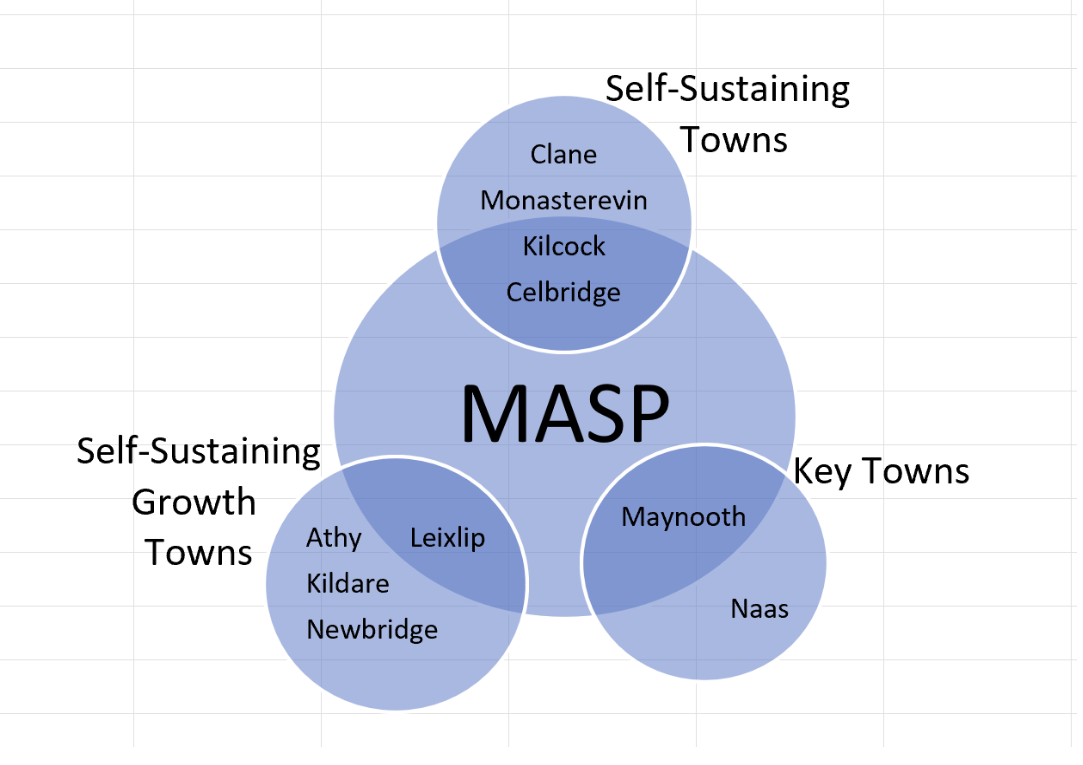
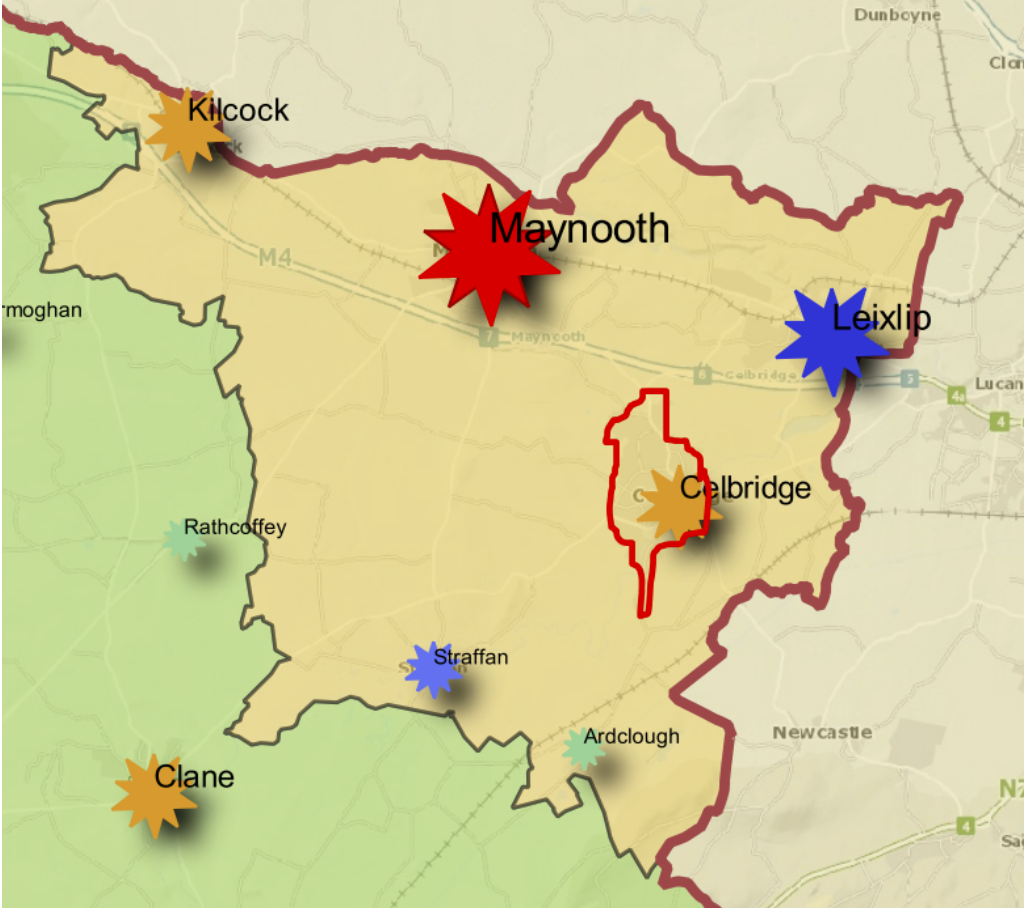 County Strategy Map / County Settlement Hierarchy Map
County Strategy Map / County Settlement Hierarchy Map
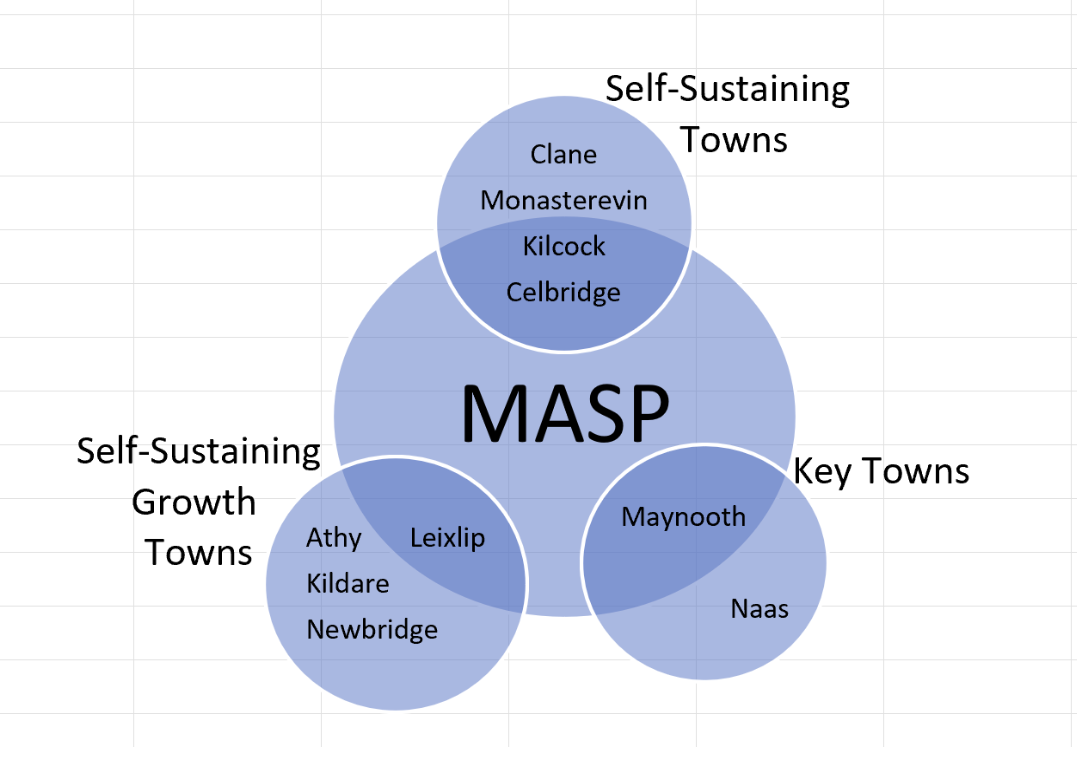
 If population and housing targets are to remain as outlined in
If population and housing targets are to remain as outlined in 


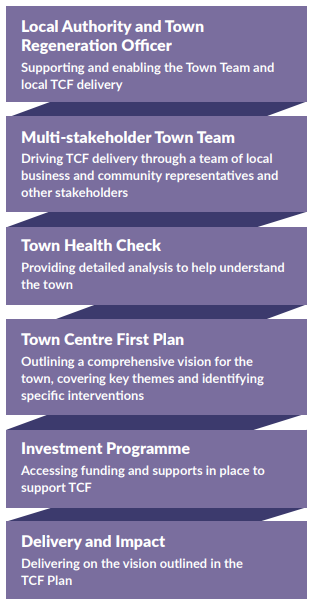 14.5.6 A Town Centre First Approach
14.5.6 A Town Centre First Approach